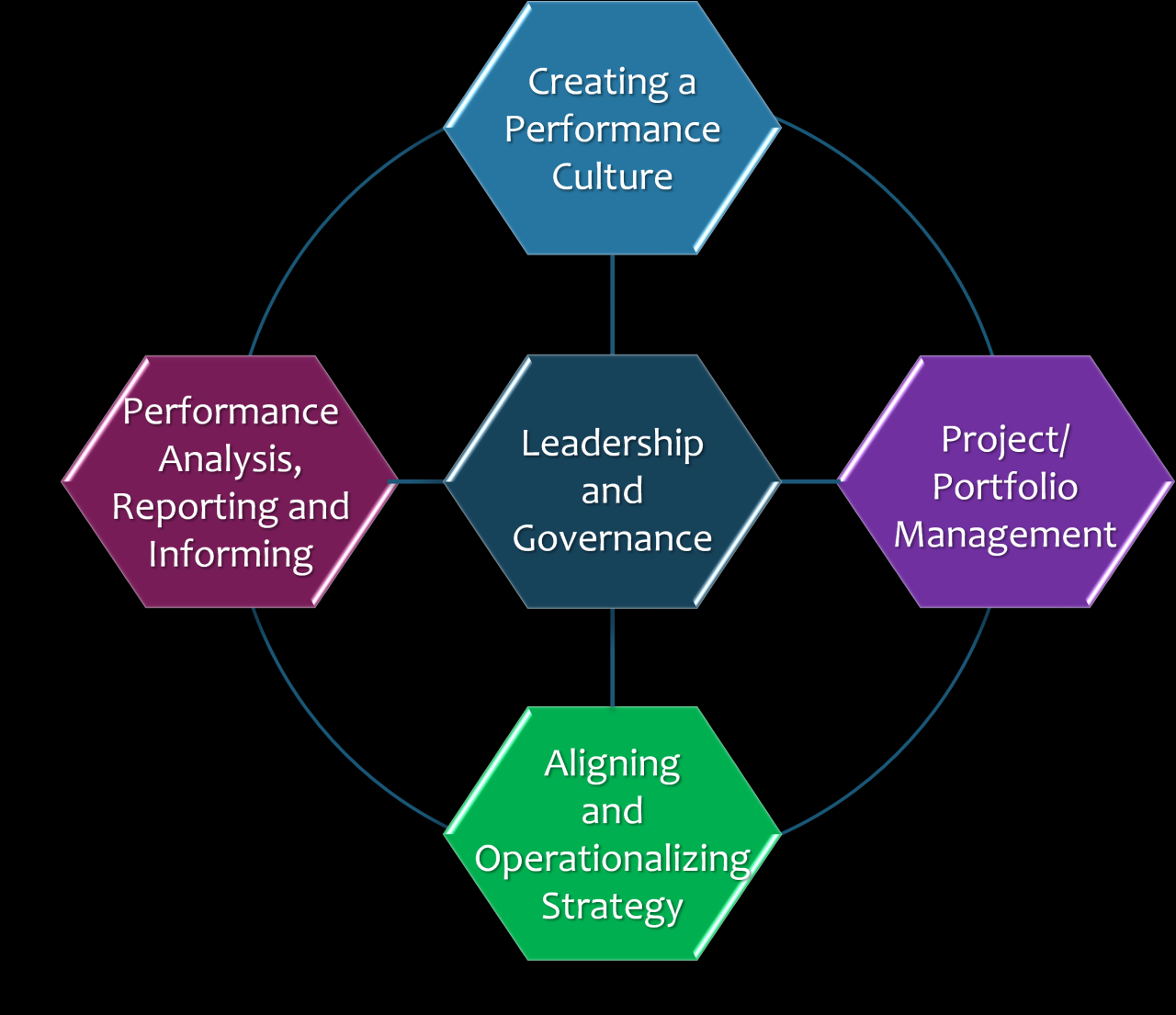
Strategy Is Necessary, But Execution Is Everything
Strategy is necessary but execution is everything. A brilliant strategy, meticulously crafted and flawlessly detailed, is worthless without the unwavering commitment and skillful execution required to bring it to life. This journey delves into the often-overlooked intricacies of execution, exploring how to translate strategic visions into tangible results. We’ll examine the pitfalls of poor execution, the critical success factors, and the crucial role of leadership in driving teams towards achieving strategic objectives.
From defining a robust strategy and evaluating its effectiveness to understanding the various stages of execution, this in-depth exploration will equip you with practical tools and insights to navigate the complexities of strategy implementation. We’ll also explore the bridging gap between strategy and execution, emphasizing the process of translating strategic goals into actionable steps and adapting strategies based on real-time feedback.
The critical role of communication, leadership, and resource allocation in driving successful execution will be highlighted.
Defining Strategy and Execution
A robust strategy isn’t just a plan; it’s a carefully considered roadmap that guides an organization toward its desired future. Execution, on the other hand, is the meticulous process of bringing that strategy to life. Both are critical, but effective execution is the ultimate arbiter of success. This section dives into the intricacies of crafting a winning strategy and the essential steps to execute it effectively.A successful strategy isn’t static; it needs to adapt and evolve with the changing environment.
It should align with the organization’s overall mission and vision, identifying clear objectives and measurable key performance indicators (KPIs). Furthermore, it must consider potential risks and develop contingency plans. A strong strategy provides a framework for decision-making and resource allocation, ensuring that actions are consistently aligned with the long-term goals.
Defining a Robust Strategy
A robust strategy hinges on several key elements. It must be clear, concise, and easily understood by all stakeholders. It needs to be actionable, with specific steps and timelines. Moreover, it should be flexible enough to accommodate unexpected changes in the market or internal circumstances. A vital aspect is aligning the strategy with the organization’s core values and culture, ensuring buy-in from all levels.
Examples of Effective Strategies Across Industries
Several industries have successfully implemented strategic initiatives. In the technology sector, companies like Apple have consistently leveraged design and user experience to maintain a strong market position. Their strategies focus on innovation and brand loyalty. In the retail sector, companies like Amazon have demonstrated successful strategies through technological advancements in logistics and e-commerce. They constantly analyze market trends and adapt their strategies to remain competitive.
These examples highlight the adaptability and continuous improvement inherent in effective strategies.
Comparing and Contrasting Approaches to Strategy Formulation
Different approaches to strategy formulation exist. Some companies adopt a top-down approach, where senior management defines the strategy, and lower levels implement it. Others prefer a bottom-up approach, involving employees at all levels in the strategy development process. A hybrid approach combines elements of both, leveraging the expertise of various stakeholders while maintaining a clear vision from leadership.
Choosing the appropriate approach depends on the specific context and organizational structure.
Framework for Evaluating Strategy Effectiveness
Evaluating a strategy’s effectiveness involves a multi-faceted approach. A key metric is comparing actual results against the projected KPIs. Furthermore, analyzing customer feedback and market share changes is crucial. Assessing the efficiency of resource utilization and the alignment of activities with the strategic goals are essential aspects. Finally, evaluating the adaptability of the strategy in response to unexpected changes provides valuable insight.
Stages Involved in Strategy Execution
The execution process comprises several distinct stages. Firstly, defining clear roles and responsibilities is crucial. Secondly, establishing a timeline for implementation is essential. Thirdly, allocating resources effectively is critical to success. Finally, monitoring progress against the plan and making necessary adjustments along the way are key elements.
These stages ensure a structured and efficient implementation process.
Sure, a brilliant strategy is crucial, but ultimately, execution is king. This holds true in any field, including the burgeoning sustainable energy sector. The future of sustainable energy looks to alternative materials, like graphene and advanced composites, to create more efficient and affordable energy solutions. the future of sustainable energy looks to alternative materials Having the right materials is only half the battle; the real challenge lies in manufacturing them at scale and integrating them into existing infrastructure.
So, while a sound strategy is vital, the successful implementation of that strategy is the true measure of success.
Key Components of Effective Execution
Effective execution hinges on several key components. Firstly, strong leadership is essential to drive commitment and inspire action. Secondly, effective communication channels and regular progress updates are vital. Thirdly, building a culture of accountability and responsibility is essential for maintaining momentum. Finally, adaptability and the ability to respond to unexpected challenges are crucial for long-term success.
The Importance of Execution
A well-defined strategy is crucial, but it’s ultimately the execution that determines success. Strategies, no matter how brilliant, remain theoretical blueprints without the dedicated effort and practical application to translate them into tangible results. Execution is the bridge connecting vision to reality, turning ideas into impactful actions. Without flawless execution, even the most meticulously crafted strategy will crumble.Execution often surpasses strategy in importance because it’s the tangible manifestation of a plan.
It’s the process of bringing the strategy to life, overcoming obstacles, and adapting to unforeseen circumstances. Effective execution hinges on meticulous planning, clear communication, and a strong commitment to the defined objectives. It’s the ongoing process of monitoring progress, making adjustments, and ensuring the plan remains relevant and effective.
Common Pitfalls in Strategy Execution
Poor communication, a lack of accountability, and insufficient resources are some of the common pitfalls in strategy execution. Often, teams lack a clear understanding of the strategic goals, leading to misalignment and wasted efforts. Without a robust system for tracking progress and identifying roadblocks, critical issues can go unnoticed until they significantly impact the project.
Why Execution Often Surpasses Strategy in Importance
Execution, unlike strategy, is not just a theoretical concept. It is the process of putting the strategy into action, facing challenges head-on, and adapting to the ever-changing business landscape. It’s about getting the job done, managing risks, and delivering tangible results. Effective execution ensures that the organization effectively utilizes resources, optimizes processes, and stays ahead of the competition.
Examples of Strategies that Failed Due to Poor Execution
Numerous businesses have seen their well-defined strategies fail due to poor execution. A prime example is Blockbuster’s failure to adapt to the rise of Netflix. While Blockbuster had a solid strategy in its prime, it failed to execute on the necessary changes to compete in the emerging streaming market. Their inability to adapt and execute on a new model ultimately led to their demise.
Similarly, companies that fail to allocate resources effectively or manage risks properly can also see their strategies fall short of their intended goals.
The Role of Leadership in Driving Execution
Strong leadership is critical for successful execution. Leaders must clearly articulate the strategy, inspire their teams, and ensure everyone is on the same page. They must create a culture of accountability and provide the necessary resources to achieve the goals. Leaders must also actively monitor progress, identify roadblocks, and adapt the execution plan as needed.
Impact of Resource Allocation on Execution Success
Resource allocation plays a critical role in execution success. If a company does not have the necessary budget, personnel, or technology to execute a strategy, it is highly unlikely that the plan will succeed. Companies must allocate resources effectively to support the execution plan, ensuring that the right people are in the right roles, with the necessary tools and support.
Critical Success Factors in Execution
- Clear Communication: Effective communication ensures everyone understands the strategy and their role in achieving the objectives. It’s essential for keeping everyone aligned and informed.
- Accountability: Clearly defined roles and responsibilities, along with a system for monitoring progress and holding individuals accountable, are vital for maintaining momentum and ensuring tasks are completed.
- Adaptability: The ability to adjust the execution plan in response to unforeseen circumstances or changing market conditions is crucial. A flexible approach ensures the strategy remains relevant and effective.
Bridging the Gap Between Strategy and Execution
Turning a strategic vision into tangible results requires a meticulous process of translating lofty goals into actionable steps. Simply outlining a strategy isn’t enough; bridging the gap between intent and implementation is crucial. This involves not just execution, but also continuous monitoring, adaptation, and motivation. Effective communication is the bedrock of this process, ensuring everyone is aligned and working towards a common objective.The journey from strategy to execution is not a linear one.
It requires a dynamic interplay between meticulous planning, real-time adjustments, and consistent feedback loops. Success depends on transforming abstract ideas into concrete actions, and then constantly refining those actions based on the evolving landscape. This dynamic approach ensures that the strategy remains relevant and effective, even as circumstances change.
Translating Strategic Goals into Actionable Steps
Effective strategy execution begins with a clear breakdown of strategic goals. Each high-level objective needs to be dissected into smaller, measurable tasks. This process, often referred to as work-breakdown structuring, involves defining specific, measurable, achievable, relevant, and time-bound (SMART) actions. This structured approach ensures that every team member understands their individual contributions and how they contribute to the overall strategic objective.
For instance, a goal of increasing market share by 15% might be broken down into tasks such as launching a new product line, enhancing customer service, or implementing targeted marketing campaigns.
Monitoring Execution Progress
A robust monitoring system is essential to track the progress of execution. This system should incorporate regular checkpoints and reporting mechanisms. Key performance indicators (KPIs) should be identified early on, providing quantifiable metrics to track progress against targets. Regular progress reports, using visual aids like dashboards or charts, allow for early identification of potential roadblocks and facilitate timely intervention.
Measuring Execution Success
Various methods can be used to measure the success of execution. Quantitative metrics like sales figures, market share, and customer acquisition cost are valuable. Qualitative measures, such as customer satisfaction surveys, employee feedback, and competitor analysis, offer valuable insights into the effectiveness of the execution strategy. A balanced approach that incorporates both quantitative and qualitative data provides a comprehensive view of performance.
A well-structured
| Execution Model | Strengths | Weaknesses |
|---|---|---|
| Matrix | Faster decision-making, cross-functional collaboration | Potential for conflicts, ambiguity in responsibilities |
| Hierarchical | Clear lines of authority, stability | Slower decision-making, less flexibility |
| Network | Adaptability, decentralized decision-making | Coordination challenges, lack of central control |
Adapting Strategies to Cultural Contexts
Cultural nuances profoundly impact execution. Strategies need to be sensitive to local customs, traditions, and values. Understanding the cultural context ensures that the strategy resonates with the target audience and avoids misunderstandings or unintended consequences. For example, a marketing campaign successful in one culture might fail miserably in another due to cultural insensitivity. Thorough research and adaptation are essential for successful implementation.
Risk Management in Execution
Risk management is an integral part of strategy execution. Identifying potential risks and developing mitigation strategies are crucial for achieving desired outcomes. Scenario planning, contingency planning, and stress testing can help prepare for various possible outcomes.
“Failing to plan is planning to fail.”
A proactive approach to risk management minimizes potential setbacks and maximizes the chances of success.
Illustrative Examples
Strategy without execution is like a blueprint gathering dust. Execution, on the other hand, is the vibrant lifeblood that brings a strategy to fruition. Illustrative examples demonstrate the crucial interplay between strategy and execution, showcasing successful implementations, painful failures, and adaptations in dynamic environments. These examples highlight the critical factors that contribute to success and the pitfalls to avoid.
Navigating Market Disruption: A Case Study
A company specializing in traditional landline phone services found itself facing a rapid shift toward mobile communication. The strategy needed to adapt to this disruption involved a multi-pronged approach. Firstly, a comprehensive analysis of the market, customer behavior, and competitor strategies was conducted. This led to a decision to pivot from solely landline services to offering bundled packages that included mobile phone services and internet access.
The execution phase involved retraining customer service representatives, developing new marketing materials, and establishing partnerships with mobile providers. Crucially, the company invested heavily in digital marketing strategies to reach a younger demographic, a critical aspect often overlooked in traditional businesses.
Successful Strategy Execution in the E-commerce Industry
Amazon’s early execution of its strategy to dominate the online retail market serves as a compelling example. The strategy encompassed building a massive inventory, offering low prices, providing convenient delivery, and fostering a user-friendly online platform. The execution was meticulous. Amazon’s initial focus was on efficiency in warehousing and logistics, enabling fast delivery. The strategy also involved aggressive customer acquisition and loyalty programs.
The company’s execution emphasized data-driven decision-making, analyzing customer purchase patterns to tailor product recommendations and promotions.
Analysis of a Failed Strategy Execution: Blockbuster
Blockbuster’s failure to adapt to the rise of Netflix demonstrates a disastrous execution of its strategy. The company initially focused on maintaining its vast network of physical stores, failing to recognize the growing demand for digital video rental services. The execution of their strategy lacked foresight, failing to invest in online technologies. Moreover, the company’s reluctance to embrace change and adapt to the evolving market resulted in an inability to compete effectively with Netflix’s disruptive model.
Having a solid strategy is crucial, but ultimately, execution is the driving force behind any success. Take, for example, the vital work of sustaining our waters the fox wolf watershed alliance. Their dedication to restoring the health of their ecosystem showcases how a well-defined plan, when paired with consistent action, can achieve remarkable results. So, while strategy provides the roadmap, it’s the relentless effort in carrying it out that truly matters.
This case study highlights the importance of recognizing market shifts and the critical need for agile responses.
Strategy Adaptation Based on Real-Time Feedback
A software company launching a new project management tool gathered real-time feedback from beta testers. Early testers identified a need for enhanced collaboration features. The company swiftly adapted its strategy, prioritizing the implementation of features that improved real-time communication and file sharing. This example underscores the importance of actively listening to customer feedback and using it to refine the execution of the strategy.
Team Execution Under Time Constraints: A Project Launch
A team tasked with launching a new mobile application faced tight deadlines. The strategy was to release the core features initially and implement additional features iteratively based on user feedback. The execution involved a meticulously planned project timeline, efficient task allocation, and effective communication among team members. This scenario exemplifies how effective time management, clear communication, and a well-defined strategy are crucial for success in a fast-paced environment.
New Product Launch Strategy Execution: A Case Study
A food delivery company introduced a new, subscription-based service offering a variety of meal options. The strategy focused on building a strong brand identity, offering a wide selection of cuisines, and providing competitive pricing. The execution involved a multi-channel marketing campaign, partnerships with restaurants, and robust customer support. Key to success was establishing clear communication channels to handle customer queries and feedback promptly.
Structuring Content (HTML Table)

Organizing information in tables is crucial for clear communication and analysis in strategy execution. Tables allow for a concise and comparative view of different aspects, facilitating understanding and decision-making. Visualizing data in this structured format enhances comprehension and aids in spotting trends or patterns more readily than plain text.
Typical Strategy Execution Process Steps
Understanding the sequence of steps in a strategy execution process is vital for effective implementation. This table Artikels a typical process, emphasizing the interconnectedness of each stage.
| Stage | Description |
|---|---|
| Strategy Definition | Clearly defining the overall strategy, objectives, and key performance indicators (KPIs). |
| Resource Allocation | Assigning necessary resources, including budget, personnel, and technology, to support the strategy. |
| Action Planning | Developing detailed action plans with specific tasks, timelines, and responsibilities. |
| Implementation | Executing the action plans, monitoring progress, and addressing any roadblocks. |
| Monitoring & Evaluation | Tracking progress against KPIs, analyzing results, and adjusting the strategy as needed. |
| Review & Adjustment | Regularly reviewing the strategy’s effectiveness and making necessary adjustments based on feedback and performance data. |
Measuring Execution Success: Different Approaches, Strategy is necessary but execution is everything
Choosing the right metrics to measure execution success is critical for assessing progress and making informed adjustments. This table contrasts various approaches.
| Approach | Description | Advantages | Disadvantages |
|---|---|---|---|
| Quantitative Metrics | Focuses on measurable data like sales figures, market share, or customer satisfaction ratings. | Provides objective and quantifiable data for analysis. | May overlook qualitative factors like employee morale or customer experience. |
| Qualitative Metrics | Emphasizes non-numerical factors like employee feedback, customer testimonials, or competitor analysis. | Provides insights into the intangible aspects of execution. | Can be subjective and challenging to standardize for comparison. |
| Balanced Scorecard Approach | Combines both quantitative and qualitative metrics to provide a holistic view of performance. | Provides a comprehensive evaluation of success by considering various perspectives. | Requires significant effort to develop and maintain a balanced scorecard. |
Factors Influencing Strategy Execution
Several factors can significantly impact the success of a strategy execution process. This table identifies key influences.
| Factor | Description |
|---|---|
| Leadership Commitment | Strong leadership support and active engagement are crucial for driving execution. |
| Resource Availability | Sufficient budget, personnel, and technology are essential to support the strategy. |
| Organizational Culture | A supportive and collaborative culture fosters a conducive environment for execution. |
| External Factors | Market conditions, economic trends, and competitor actions can impact execution. |
| Team Capabilities | Skilled and motivated teams are necessary for successful execution. |
Project Execution Team Roles & Responsibilities
Defining clear roles and responsibilities within the project execution team is essential for effective collaboration. This table highlights key roles.
| Role | Responsibilities |
|---|---|
| Project Manager | Oversees the entire project, manages resources, and ensures timelines are met. |
| Team Leads | Manage specific tasks and teams, ensuring alignment with project goals. |
| Subject Matter Experts (SMEs) | Provide expertise and guidance on specific aspects of the project. |
| Support Staff | Provide administrative and technical support to the project team. |
Stages of Strategy Implementation Project
This table Artikels the different stages involved in a strategy implementation project.
| Stage | Description |
|---|---|
| Planning | Developing the project plan, defining objectives, and allocating resources. |
| Execution | Carrying out the planned activities and tasks. |
| Monitoring & Controlling | Tracking progress, identifying deviations, and taking corrective actions. |
| Evaluation & Closure | Assessing the project’s success, documenting lessons learned, and closing out the project. |
Strategy Progress Monitoring Metrics
This table lists key metrics used to track the progress of a strategy.
| Metric | Description |
|---|---|
| Key Performance Indicators (KPIs) | Quantifiable measures used to assess progress toward strategic goals. |
| Project Completion Rate | Percentage of tasks or milestones completed against the project plan. |
| Budget Variance | Difference between the actual and planned budget expenditures. |
| Customer Satisfaction Scores | Measures of customer satisfaction with the implemented strategy. |
Closing Notes
In conclusion, while a well-defined strategy provides a roadmap, it’s the execution that ultimately determines success. This exploration has underscored the vital link between strategic planning and the meticulous execution required to achieve desired outcomes. By understanding the key elements of successful execution, the importance of leadership, and the need for continuous improvement, organizations can navigate challenges, adapt to market changes, and achieve sustained success.
Ultimately, it’s about transforming vision into reality, one well-executed step at a time.







